Refer to the exhibit.
Assume that OSPFv3 is properly configured on all routers and that R4 advertises its system prefix into Area 0. Which of the following statements best describes how R5 learns R4's IPv6 system prefix?
Which one of the commands below will create a static route to network 2.3.4.0/24 on the Alcatel-Lucent 7750 SR router?
Click the exhibit button.
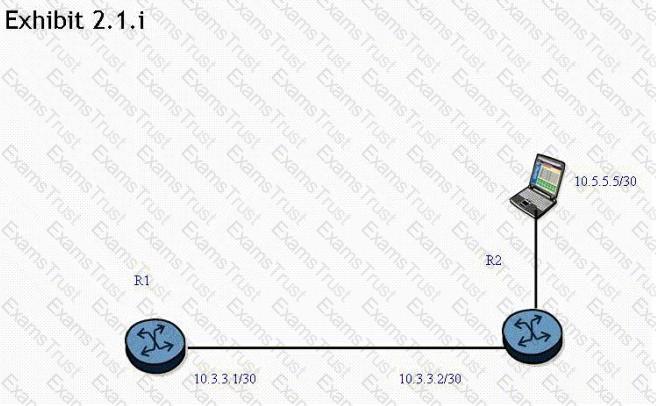
A static route is created on router R1 "using the static-route 0.0.0.0/0 next-hop 10.3.3.2" command. What command can be used to test the static route on an Nokia 7750 SR?
In an OSPF Hello packet what fields must match all neighbor routers on the segment? (Choose 3)
What are the default Hello and Dead timer intervals for OSPF on the Nokia 7750 SR?
Refer to the exhibit.
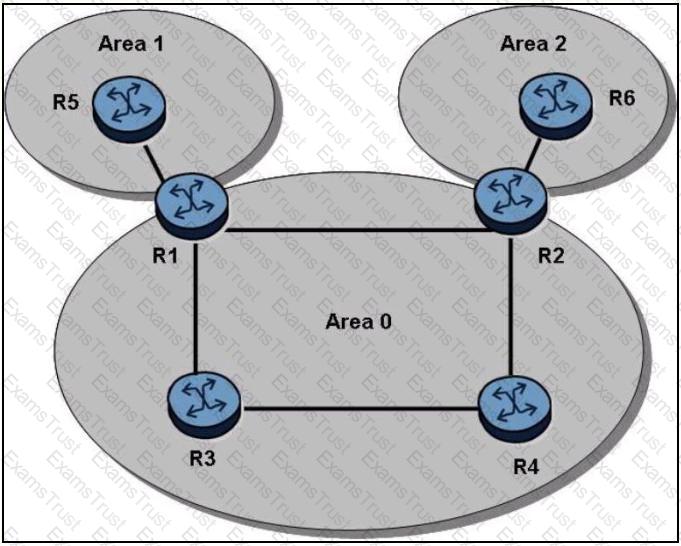
Assume that OSPFv3 is properly configured on all routers and that R4 advertises its system prefix into Area 0. Which of the following statements best describes how R5 learns R4's IPv6 system prefix?
A static route is created using the command "static-route 0.0.0.0/0 next-hop 3.3.3.1". What command could be used to test the static route on a Nokia 7750 SR?
Which of the following LSA types stay within an OSPF area, and are not flooded outside of the area? Choose two answers.
Click the exhibit button.
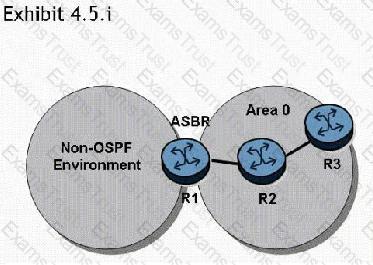
In the topology shown, router R1 is an ASBR configured to export external routes to OSPF. How many type 4 LSAs will be present in the network?
An OSPF router receives an update in which the sequence number, age, and checksum are the same as the entry already in the topological database. What action is taken by the router?
What is the default preference value for a static route in the Nokia 7750 SR?
In an OSPF Hello packet, which of the following fields must match for all neighbor routers on the segment? Choose three answers.
Which of the following cannot be used as a matching criterion in route policy statements?
What type of OSPF router generates a type 2 LSA?
Which of the following statements apply to link state protocol behavior? Choose three answers.
Click the exhibit button.
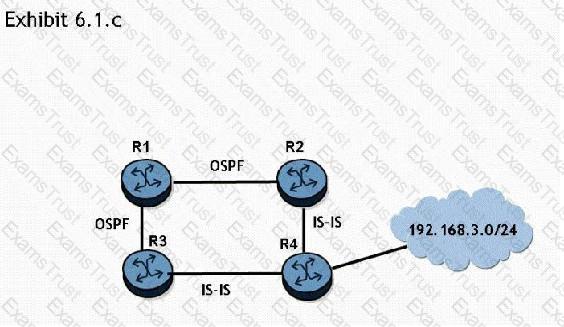
If router R2 redistributes the IS-IS route to 192.168.3.0/24 into OSPF, router R3 preference of these two routes? Choose two answers.
Which of the following concerning OSPFv3 is TRUE?
Which of the following correctly lists the 5 OSPF packet types?
Which of the following best describes the type of packets used by OSPF routers to exchange updates on a point-to-point link?
Graceful Restart is supported by what IGPs?
What are the types of networks supported on a Nokia 7750 SR for OSPF? (Choose 2)
Which of the following statements best describes an OSPF type 3 LSA?
What is the protocol number for OSPF in the IP header?
Click on the exhibit.
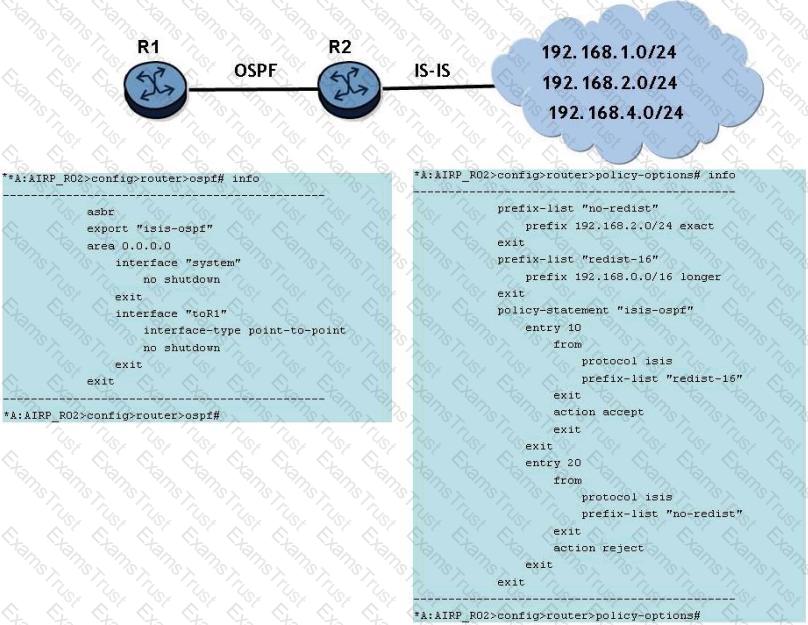
Router R2 learns the networks shown from IS-IS. Router R2 is configured to redistribute routes from IS-IS to OSPF as shown. Assume the OSPF and IS-IS adjacencies are operational.
How many OSPF Type 5 LSAs will router R1 receive from router R2?
What is the source IP address in an OSPF update?
Static routing will be used in a network between a corporate head office, with many connected networks, and a branch office, with one connection to the head office. Which of the following best describes the likely configuration?
Which of the following are similarities between OSPF and IS-IS? Choose two answers.
Which of the following statements describe the major features of OSPF? Choose two answers.
What are the three databases maintained by a Link State Protocol?
What is the default inbound metric for RIP on the Nokia 7750 SR?
What is the default priority value used for electing the DR on an Nokia 7750 SR running OSPF on an Ethernet?